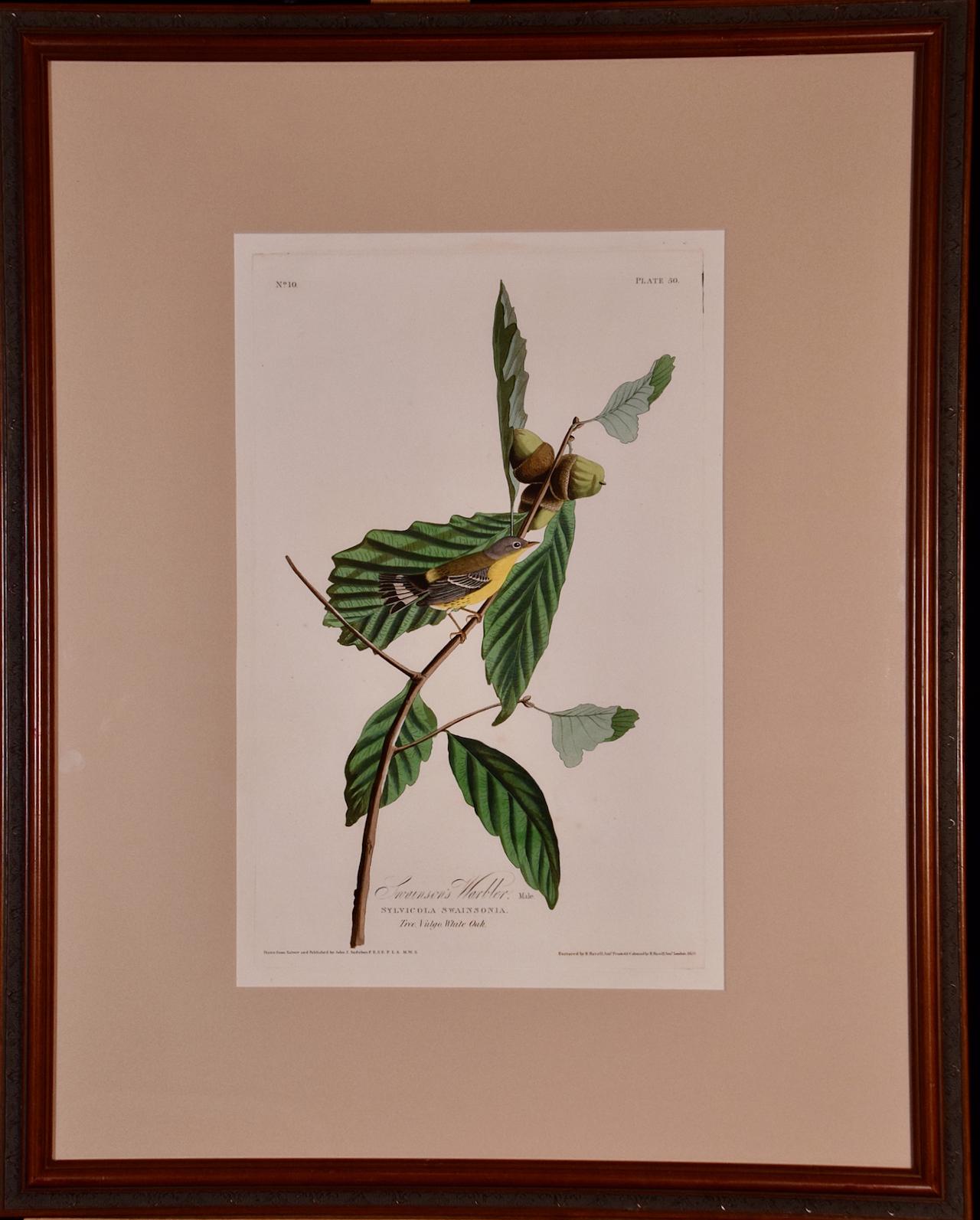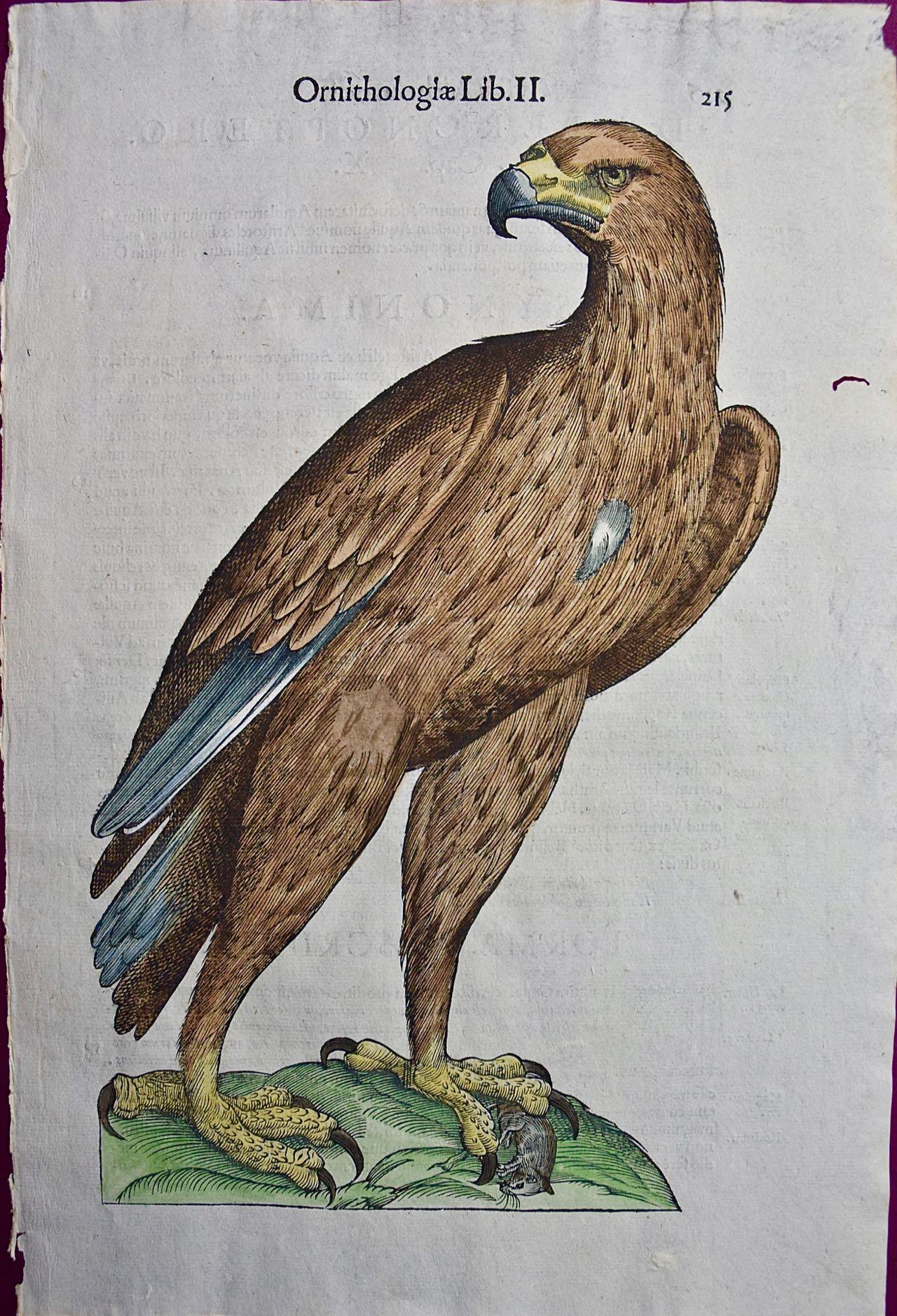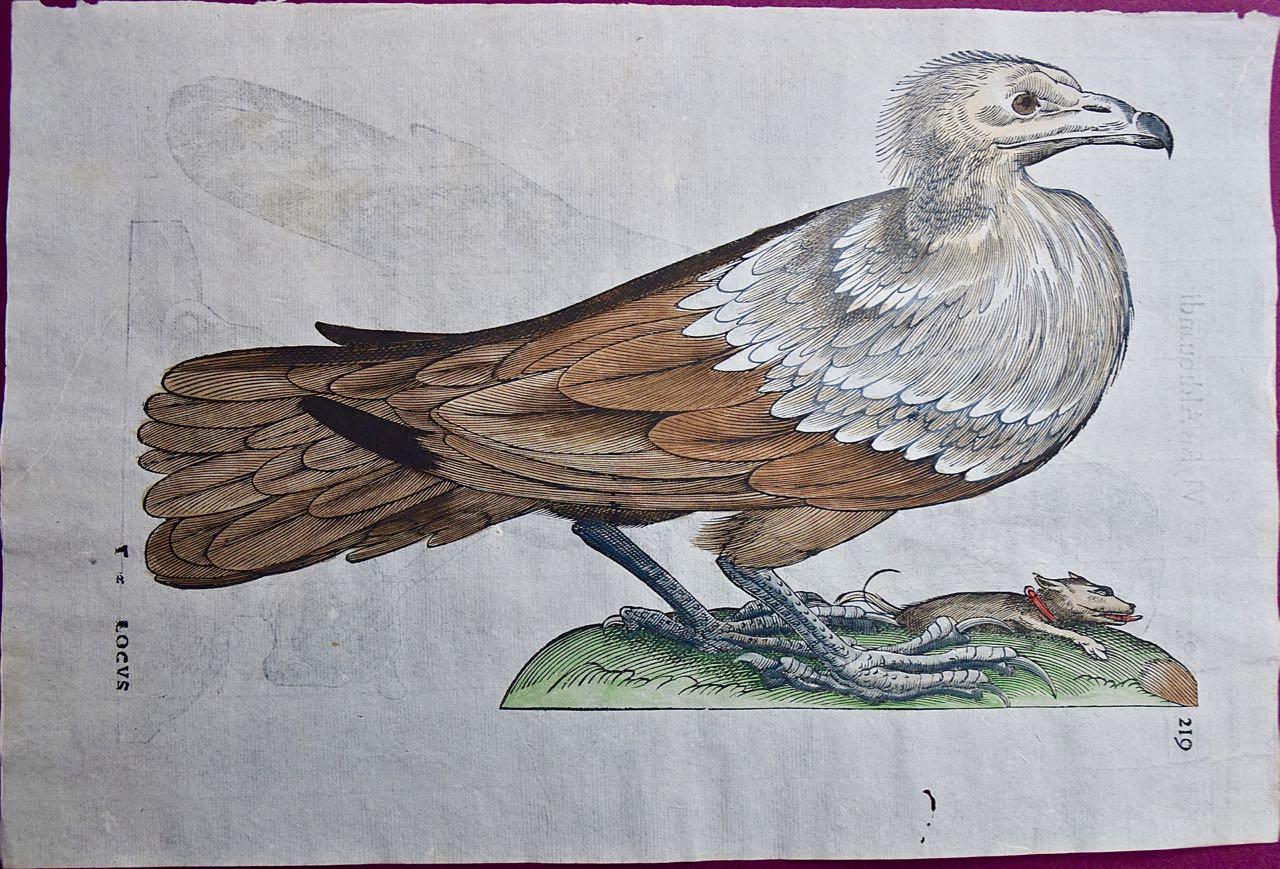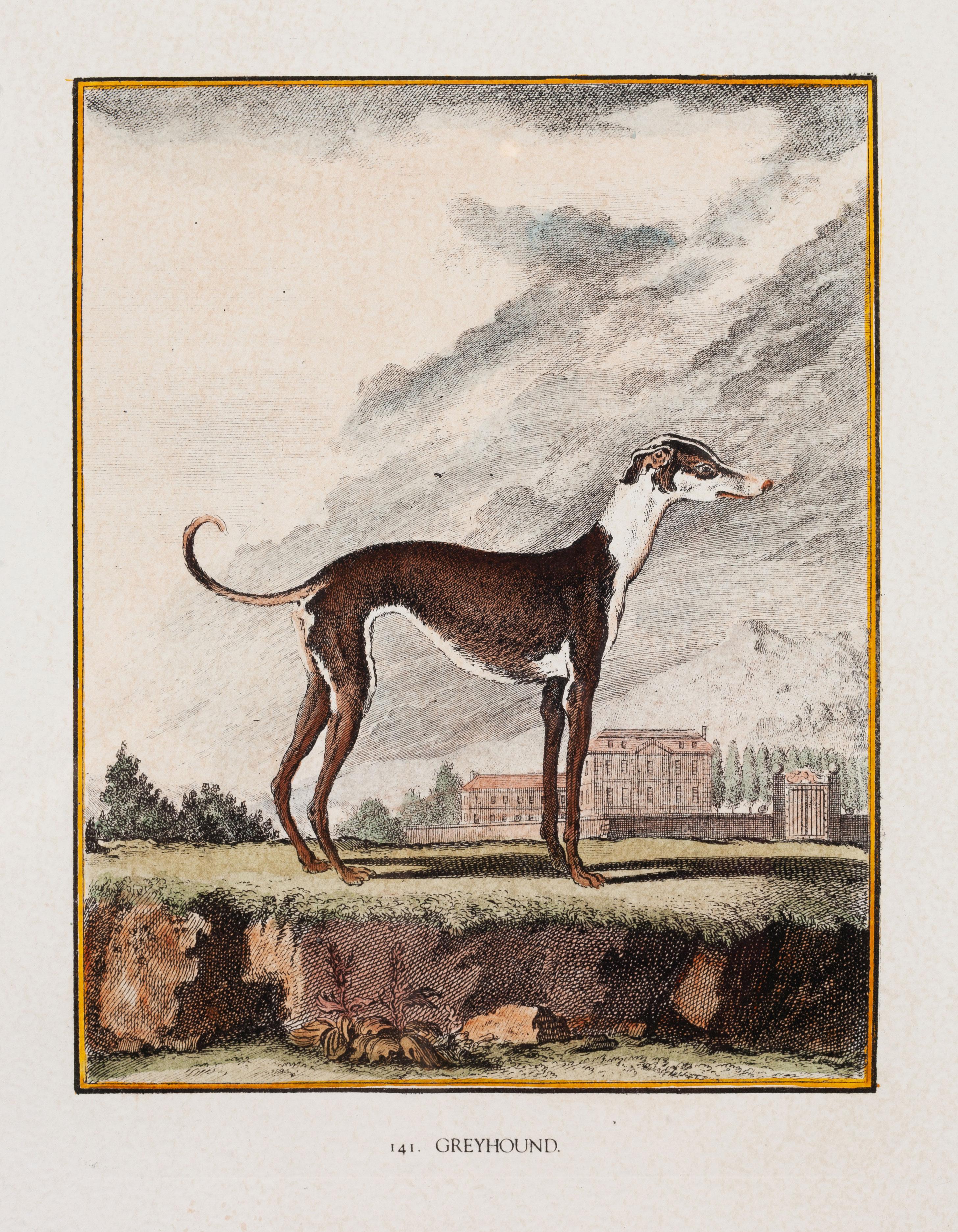Items Similar to "Esquimaux Curlew": A Framed Original Audubon Hand-colored Folio Engraving
Want more images or videos?
Request additional images or videos from the seller
John James Audubon"Esquimaux Curlew": A Framed Original Audubon Hand-colored Folio Engraving 1834
1834
About the Item
This is an original hand-colored folio edition John James Audubon engraving entitled "Esquimaux Curlew", Folio, Pl. CCVIII", No. 42, Plate 208, from Audubon's "Birds of America". It was engraved, printed and colored in London by Robert Havell, Jr. in 1834. It depicts a male and a female Esquimaux Curlew birds on land. The male stands on a mound and the female lies on the ground. The esquimaux curlew bird was once abundant in the United States, but it is currently presumed extinct, as it was last seen in 1962.
This original folio edition hand-colored Audubon bird engraving is presented in a medium brown-colored wood frame with a charcoal gray-colored mat. It is glazed with UV conservation glass. All of the framing and mounting materials are archival. The frame measures 23.25" high by 28.38 wide by 0.75" deep". The sheet appears to have been trimmed. There is a small spot in the upper right and a few tiny barely perceptible spots elsewhere. The print is otherwise in very good condition.
Audubon had rarely seen an Esquimaux Curlew in the wild. Here is an excerpt from his book in his own words: "How this species manages to cross the whole extent of the United States without being seen after leaving Massachusetts, is to me very wonderful. On one occasion only have I ever had a glimpse of it. I was in company with my learned and generous friend John Bachman of Charleston, on one of the islands on the coast of South Carolina, whither we had gone with the view of watching the Long-billed Curlews (Numenius longirostris). It was at the dawn of a fine day, when a dense flock of the northern Curlews passed to the southward, near enough to enable us to ascertain the species, but so swiftly, that in a few minutes they were quite out of sight.
On the 29th of July, 1833, during a thick fog, the Esquimaux Curlews made their first appearance in Labrador, near the harbour of Brag d'Or. They evidently came from the north, and arrived in such dense flocks as to remind me of the Passenger Pigeons. The birds at length came, flock after flock, passed close round our vessel, and directed their course toward the sterile mountainous tracts in the neighbourhood."
John James Audubon (1785-1851) was a naturalist and artist. He was initially unsuccessful financially prior to the publication of his famous work “The Birds of America”, spending time in debtor’s prison, once stabbing a disgruntled investor in self-defense. However, his obsession with birds and art motivated him to persist in his goal of documenting every bird in America via his watercolor paintings and publishing his works for all to enjoy. Audubon's first illustrations were published in a large elephant folio size, engraved in London by Robert Have, Jr.. Due to their expense they were purchased in rather small numbers by the wealthy. To reach a larger audience, Audubon, with the help of his sons and J. T. Bowen, published a smaller octavo sized lithograph version, which were much more affordable.
With the success of his bird projects, Audubon then turned his attention to four-legged animals. He explored the Missouri River in 1843 sketching the four-legged animals he encountered in their natural setting. His expedition covered some of the same regions recently explored by Lewis and Clark, traveling from present day Alaska to Mexico. Audubon realized that this was an opportunity to document these animals in the still relatively pristine American wilderness, before man encroached on their environment.
Between 1845 and 1848, Audubon and his sons John Woodhouse Audubon and Victor Gifford Audubon produced a set of elephant folio sized lithographs that were primarily engraved and hand colored by J. T. Bowen in Philadelphia. The publication, which included text descriptions of the animals was published 3 years before Audubon died. As with the birds, this was followed by a three-volume set of 155 octavo-sized plates entitled “The Quadrupeds of North America” completed and published by Audubon’s sons, John, Jr. and Victor.
Audubon prints continue to be popular and a wise investment. The double elephant folio set “The Birds of America” have sold at auction for as much as $8.8 million, and individual plates may sell for six figures. The beautiful octavo sized plates are not as expensive, but becoming more sought after, as the folio bird plates become unattainable to all but the very wealthy.
Robert Havell Jr. (1793-1878) was the main engraver for Audubon's folio Birds of America publication. His aquatint engravings of most of the plates (except for the first ten) is considered a significant artistic achievement and was essential to the success of Audubon's Birds of America. Havell and Audubon became close friends and associates. In 1839 Havell went to America at the invitation of Audubon, first residing in Brooklyn. He settled in Ossining on the Hudson River and later moved to Tarrytown, New York, where he remained for the rest of his life. After the publication of Birds of America, Havell continued to create engravings, but became more known for his landscape and countryside paintings of the Hudson River valley. He travelled frequently in a homemade horse-drawn trailer, sketching and taking notes and translating his sketches into larger oils. He is considered an influential contributor of the Hudson River School of American painters. Havell died in 1878 and is buried in Sleepy Hollow Cemetery in Sleepy Hollow, located in the town of Mount Pleasant in Westchester County, New York, on the east bank of the Hudson River, with the village of Tarrytown to the south.
- Creator:John James Audubon (1785-1851, American, French)
- Creation Year:1834
- Dimensions:Height: 23.25 in (59.06 cm)Width: 28.38 in (72.09 cm)Depth: 0.75 in (1.91 cm)
- Medium:
- Movement & Style:
- Period:
- Condition:
- Gallery Location:Alamo, CA
- Reference Number:
John James Audubon
John James Audubon (April 26, 1785, Les Cayes, Saint-Domingue (later Haiti) – January 27, 1851 (aged 65) Manhattan, New York, U.S.), born Jean-Jacques Audubon, was an American ornithologist, naturalist, and painter. He was notable for his expansive studies to document all types of American birds and for his detailed illustrations that depicted the birds in their natural habitats. His major work, a color-plate book entitled The Birds of America (1827–1839), is considered one of the finest ornithological works ever completed. Audubon identified 25 new species.
About the Seller
5.0
Vetted Seller
These experienced sellers undergo a comprehensive evaluation by our team of in-house experts.
Established in 2011
1stDibs seller since 2019
234 sales on 1stDibs
Typical response time: 1 hour
- ShippingRetrieving quote...Ships From: Alamo, CA
- Return PolicyA return for this item may be initiated within 7 days of delivery.
More From This SellerView All
- Eagle: A 16th/17th Century Hand-colored Engraving by AldrovandiBy Ulisse AldrovandiLocated in Alamo, CAThis very rare, first edition, folio hand-colored engraving of an eagle is plate K2 from Ulisse Aldrovandi’s 'Opera Omnia', published between 1599 an...Category
Early 17th Century Naturalistic Animal Prints
MaterialsEngraving
- Swainson's Warbler: A Framed Original Hand-colored Audubon Folio Bird EngravingBy John James AudubonLocated in Alamo, CAThis is an original John James Audubon hand-colored folio sized lithograph entitled "Swainson's Warbler, Male, Sylvicola Swainsonia, Tree: Vulgo, White Oak", No. 10, Plate 50, from A...Category
Mid-19th Century Naturalistic Animal Prints
MaterialsEngraving
- Eagle: A 16th/17th Century Hand-colored Engraving by AldrovandiBy Ulisse AldrovandiLocated in Alamo, CAThis very rare, first edition, folio hand-colored engraving of an eagle is plate 215 from Ulisse Aldrovandi’s 'Opera Omnia', published between 1599 a...Category
Early 17th Century Naturalistic Animal Prints
MaterialsEngraving
- Bird of Prey: A 16th/17th Century Hand-colored Engraving by AldrovandiBy Ulisse AldrovandiLocated in Alamo, CAThis very rare, first edition, folio hand-colored woodcut engraving of a bird of prey is plate 219 from Ulisse Aldrovandi’s 'Opera Omnia', published ...Category
Early 17th Century Naturalistic Animal Prints
MaterialsEngraving
- An Icelandic GyrFalcon: An 18th Century Hand-colored Engraving by MartinetBy François Nicolas MartinetLocated in Alamo, CAThis is a hand-colored engraving of an Icelandic Ger Falcon entitled "Gerfault d''Islande" by Francois Nicolas Martinet, plate 210 from 'Histoire Naturelle des Oiseaux' in associatio...Category
1760s Naturalistic Animal Prints
MaterialsEngraving
- A Greenfinch & A Sparrow: An 18th Century Hand-colored Engraving by MartinetBy François Nicolas MartinetLocated in Alamo, CAThis is a hand-colored engraving of a Greenfinch bird and a tree sparrow ("1, Le Friquet, 2. Le Verdier") by Francois Nicolas Martinet, plate 227 from 'Histoire Naturelle des Oiseaux...Category
1760s Naturalistic Animal Prints
MaterialsEngraving
You May Also Like
- His & Hers Prints, Pair of 18th Century Engravings of Male and Female TapirsBy Jacques Eustache de SeveLocated in Harkstead, GBA very attractive pair of engravings of Male and Female Tapirs. Etching / engraving on hand laid paper. Sheet size:(7,9 x 10,2 inch). Image size: (6,3 x 7,9 inch). Framed size: 15...Category
18th Century Naturalistic Animal Prints
MaterialsEngraving
- GreyhoundBy Georges-Louis Leclerc, Comte de BuffonLocated in Columbia, MOGreyhound 1773-1802 Engraving 14 x 10 inches Framed: 24 x 21 inchesCategory
1770s Naturalistic Animal Prints
MaterialsEngraving
- "Bellman, " an Otter-HoundLocated in Columbia, MO"Bellman, " an Otter-Hound 1887 Etching 3 x 5Category
Late 19th Century Naturalistic Animal Prints
MaterialsEtching
- "Lady, " an English TerrierLocated in Columbia, MO"Lady, " an English Terrier 1887 Etching 3 x 5Category
Late 19th Century Naturalistic Animal Prints
MaterialsEtching
- "George" and "Romp, " Sussex SpanielsLocated in Columbia, MO"George" and "Romp, " Sussex Spaniels 1887 Etching 3 x 5Category
Late 19th Century Naturalistic Animal Prints
MaterialsEtching
- Retriever Crossed with a SetterLocated in Columbia, MORetriever Crossed with a Setter 1887 Etching 3 x 5Category
Late 19th Century Naturalistic Animal Prints
MaterialsEtching
Recently Viewed
View AllMore Ways To Browse
A Frame
Set Hand Colored
Antique Round Frames
Round Antique Frames
Four Engravings
Bird Engraving
Art Print Folio
Dior Glasses Frames
Dior Glasses Frame
Dior Glass Frames
Engraving And Bird
Philadelphia Print Original
Set Of Ten Framed
19th Century Engraving Framed
Multiple Oils
Antique Bird Engravings
Framing Antique Documents
Small Round Frame Art






